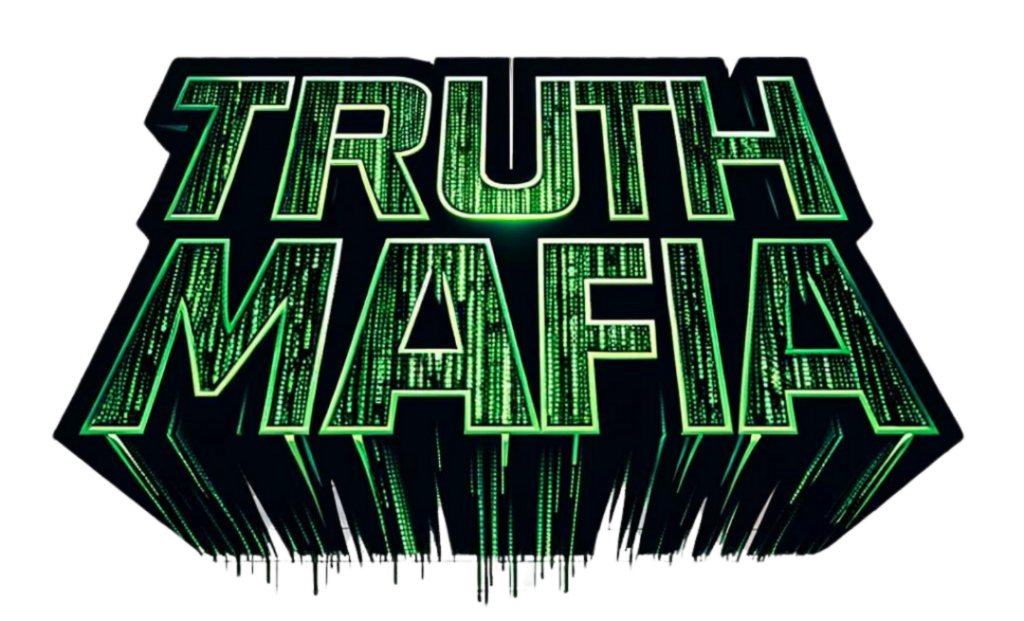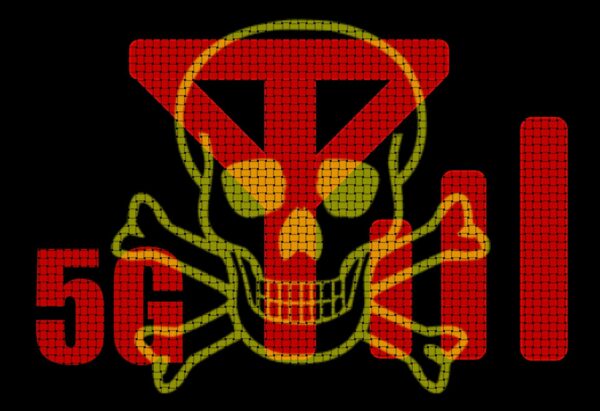

 Stay Informed with Truth Mafia!
Stay Informed with Truth Mafia!

 Join Our Patriot Movements!
Join Our Patriot Movements!


 Support Truth Mafia by Supporting Our Sponsors
Support Truth Mafia by Supporting Our Sponsors




 Follow Truth Mafia Everywhere
Follow Truth Mafia Everywhere







 TOMMY TRUTHFUL SOCIAL MEDIA
TOMMY TRUTHFUL SOCIAL MEDIA



 GEMATRIA FPC/NPC DECODE! $33
GEMATRIA FPC/NPC DECODE! $33 
Find Your Source Code in the Simulation with a Gematria Decode. Are you a First Player Character in control of your destiny, or are you trapped in the Saturn-Moon Matrix? Discover your unique source code for just $33!
Book our Gematria Decode VIA This Link Below: TruthMafia.com/Gematria-Decode
 BECOME A TRUTH MAFIA MADE MEMBER
BECOME A TRUTH MAFIA MADE MEMBER 
Made Members Receive Full Access To Our Exclusive Members-Only Content Created By Tommy Truthful
Click On The Following Link To Become A Made Member!: truthmafia.com/jointhemob
Summary
 Pope Francis, the first Latin American and Jesuit Pope, passed away at 88 after a long illness. Known for his humble lifestyle and advocacy for climate action and global unity, his tenure was not without controversy, including his slow response to clergy abuse. His Jesuit background, a group with a complex history of influence in various sectors and accusations of despotism, added another layer to his legacy. The Jesuits, founded in 1534, have been both praised for their educational work and criticized for their political meddling.
Pope Francis, the first Latin American and Jesuit Pope, passed away at 88 after a long illness. Known for his humble lifestyle and advocacy for climate action and global unity, his tenure was not without controversy, including his slow response to clergy abuse. His Jesuit background, a group with a complex history of influence in various sectors and accusations of despotism, added another layer to his legacy. The Jesuits, founded in 1534, have been both praised for their educational work and criticized for their political meddling. The Jesuits played a key role in promoting the sun-centered model of the universe in the 16th and 17th centuries, which is now widely accepted. Pope Francis, who recently passed away, was known for his care for migrants and calls for peace, especially in the Middle East. After his death, a nine-day mourning period begins, followed by a structured process to choose a new Pope. This involves the College of Cardinals voting in secret, with a two-thirds majority needed to elect a new Pope, who then immediately takes office.
The Jesuits played a key role in promoting the sun-centered model of the universe in the 16th and 17th centuries, which is now widely accepted. Pope Francis, who recently passed away, was known for his care for migrants and calls for peace, especially in the Middle East. After his death, a nine-day mourning period begins, followed by a structured process to choose a new Pope. This involves the College of Cardinals voting in secret, with a two-thirds majority needed to elect a new Pope, who then immediately takes office.Transcript
The guy led Vatican City, a sovereign territory with massive global influence. Plus, Pope Francis was a trailblazer, the first Latin American Pope, and the first openly Jesuit Pope, a detail that doesn’t get enough spotlight. Before we break it all down, let’s do a quick rundown on the 266 Pope, Pope Francis, and what made him such a big deal. Born Jorge Mario Bergoglio on December 17th, 1936 in the working-class Flores neighborhood of Buenos Aires, Argentina, he was the eldest of five kids raised by Italian immigrants, a railway worker dad, and a housewife mom.
That Italian Argentine fire shaped his soul. At 21, a brutal battle with pneumonia cost him part of a lung and lit a spiritual spark. By 1958, he joined the Jesuits, becoming a priest in 1969. Now, why is that Jesuit link such a big deal? Well, buckle up. Jesuits run top-tier universities and mission work, but their influence stretches way beyond. Think politics, education, media, medicine, and even entertainment. To the casual observer, they’re about humility and education, traits Francis carried as the first Jesuit Pope. But history tells a darker tale. Not the mere father, abbot of a monastery.
And the aim of this organization is power. Power in its most despotic exercise, absolute power, universal power, power to control the world by the volition of a single man. Jesuitism is the most absolute of despotisms, and at the same time, the greatest and most enormous of abuses. The general of the Jesuits insists on being master sovereign over the sovereign. Wherever the Jesuits are admitted, they will be masters, caused what it may. Their society is by nature dictatorial, and therefore it is the irreconcilable enemy of all constituted authority. Every act, every crime, however atrocious, is a meritorious work, if committed for the interest of the society of the Jesuits or by the order of the general.
For those unaware of what despotism means, it’s the exercise of absolute power, especially in a cruel and oppressive way. Harsh, maybe, but it wasn’t just talk. The Jesuits boosted secular rulers and papacy. But they’re sway-made enemies. Anti-religious thinkers and monarchs grew wary and even hostile. A quick google search might hype their charity and schools, and yeah, they’ve done good globally, but that murky past, it’s real and worth a hard look. So, what made Francis stand out? Elected March 13, 2013, he was the first pope from Latin America, the Southern Hemisphere, and the first non-European since the 8th century.
He skipped the fancy apostolic palace, kicking it in a simple guesthouse, channeling Saint Francis of Assisi, whose name he took. His 2015 encyclical, Laudato Si, called for climate action, while his 2020 Fratelli Tutti pushed for global brotherhood, urging solidarity across cultures to fight inequality and division. He was all for migrants and interfaith connections. Before he was Pope Francis, he was the auxiliary bishop in 92, Buenos Aires archbishop in 98, and Cardinal in 2001, then pope after Benedict XVI stepped down. But it wasn’t all smooth, his 2023 move to bless same-sex couples had critics yelling betrayal.
Though he held firm on traditional marriage, his slow response to clergy abuse, like the Marco Rupnik case, took heat, even if he later pushed for justice. From doctrine shake-ups to fighting for the marginalized, Francis was a pope of first, tied to a Jesuit legacy that’s both interesting and shady. We’ve dropped the Jesuits’ name plenty of times on this channel, but for the newbies, here’s the Sparknotes versions of their origins. Their history’s massive, so we’re hitting the essentials to get you up to speed. The Jesuits, formerly the Society of Jesus, were founded in Paris on August 15, 1534, by Saint Ignatius of Loyola and six others, including Diego Lanes.
They swore vows of poverty, chastity, and a pilgrimage to Jerusalem, or if that didn’t work, total devotion to the pope’s mission. Diego Lanes, a converso, a Jew who converted to Catholicism from Spain, was a key player. Why’s that matter? Well, folks often pin global troubles on groups like Jews, or just the Catholic Church or Freemasons, but the truth is their influence is all tangled up, blurring the lines of blame. Ignatius, the heart of the operation, was a spiritual fire band. In 1521, a cannonball smashed his leg in battle, leaving him bedridden and soul-searching.
Like Pope Francis’ health crisis, this injury set Ignatius on a divine path. He faced constant rejection from nobles and church elites, but kept pushing. By September 27, 1540, after reaching Rome, Pope Paul III issued the papal bull Legimini Militante Secclesii, Latin for to the government of the church militant, officially recognizing the Society of Jesus as a religious order, from there the Jesuits were ready to shake the world. Now, like Napoleon said earlier, their structure was straight-up militant, probably from that military style of discipline. They even called their leader the superior general. Sounds more like an army than a monastery, right? But their meddling in politics and education got them in hot water, kicked out of places like Spain, France, Portugal, and Hungary.
Countries don’t just boot groups for no reason. On a stream a while back, I dove into the Jesuit oath, and let me tell you, it’s a clear window into their mindset. In my view, they hide behind the mask of religious missionaries while pushing their own spiritual teachings over scripture. That’s of course a red flag for anyone of faith. Why would God give you holy scripture just for humans to twist it with their own takes? That’s the Jesuits in a nutshell. This barely scratches the surface, and if you really want to dive deep, I recommend you check out this book on the screen.
Alright, so let’s get into the numbers. For those who caught my post on Instagram, we’ll start with those and expand from that. His full name, Jorge Mario Bergoglio, aligns with the day of the year he died. That’s April 21st, the 111th day of the year. Unlike other popes, Pope Francis stayed at the Domus Sanctae Martha in suite 201 by no coincidence being the first Jesuit pope. Reports state that Pope Francis died from cerebral stroke at 88. Notice natural causes and stroke on their own both equate to 88. Notice how 88 years old spelled out matches his full name.
Granted, he’s the first ever Jesuit to hold position as the pope. It’s fitting he passed away on the 21st day of April, when the word Jesuit equals 21. Just some other interesting things to consider. Rome was founded on April 21st, 753 BC. How fitting is it that the Pope of Rome dies on this day? Monday wasn’t just any ordinary Monday, as it was Easter Monday, or some might refer to it as Monday of the Angel, also known as Little Easter, which is a Christian holiday observed the day after Easter Sunday. It celebrates the angel who appeared at Jesus’ empty tomb, announcing his resurrection to the woman who visited, as described in Luke 24, 1-7.
The angel’s role was to proclaim the risen Christ, symbolizing hope and divine revelation. Interesting day for the Vicar of Christ to pass away, don’t you think? Notice Vicar of Christ equates to 70, aligned with the date numerology of his death. And speaking of the date numerology, the name Francis matches the date numerology, which makes his death even more timely, if you will. Adding just a month and day together, you can see the Pope’s death came on a date with 25 numerology. Notice both Pope and death match in the reduction ciphers. Now remember, Pope Francis is unique for a few reasons.
One in particular is that he’s the first Jesuit to hold the position of the Pope. He became the 266th occupant, and this is by no coincidence. The Jesuit’s logo has the letters IHS on it, which stands for Jesus homonym Salvatore, meaning Jesus, Savior of Mankind. This is not their motto, but a Christogram, a symbolic abbreviation of Jesus’ name in Greek. Funny how it equates to 266 in Giamatria. Going back to 2013, the year he was elected, notice it was on the 72nd day of the year, March 13, matching with Jesuit order. Again, he was the first Jesuit out of the order to hold such position of power.
Like Pope Francis, the founder of the Jesuit’s Ignatius of Loyola’s name holds the value of 201, matching the name of the order. When it comes to the Jesuits, some might argue that they are worshippers of the Son, and all their talk about Jesus is a guise for their Son worship. Consider this. Jesus, revered as the Son of God in the light of the world, is worshiped by Christians and Catholics globally on Sunday. Intriguingly, the Jesuit order and Son worship align in reduction ciphers. A detail some might dismiss as coincidence, but let’s just dig a little deeper.
Before the heliocentric model placed the Son at the universe’s center, the world leaned on geocentric views. The Jesuits were pivotal in flipping that script. In the 16th and 17th centuries, Jesuit astronomers like Christopher Clavius championed Copernicus’ heliocentric theory with rigorous math and observations, even against early church pushback. They taught it in their colleges, often blending it with Ptolemaic ideas to smooth its acceptance. By the 18th century, Jesuits like Roger Boskovich refined heliocentric principles cementing its place in modern astronomy. Through their vast network of schools and missions, they spread these ideas worldwide, shaping the Son-centered model we accept today.
Think about it. Sunday worship, Son at the center. Coincidence or connection? I bring all that up just to mention that even the word heliocentrism equates to 201 like the Jesuit order. On Sunday, Pope Francis met with Vice President J.D. Vance, a Catholic convert briefly for Easter greetings. The Pope also touched on migration in the Trump administration’s plans to deport migrants en masse. Francis made caring for migrants a hallmark of his papacy. As for Pope Francis’ actual last words, he gave that in his Urbi et Urbi, which translates to the city and to the world.
He primarily spoke for peace. I’m not going to read the full text here, but one part in particular I wanted to highlight was another call for a ceasefire in the Holy Land of Palestine, now called Israel. He even spoke briefly on other Middle Eastern nations like Syria, Lebanon and Yemen. Granted his last few years as Pope, he has seen like the rest of us the inexcusable actions of the Israeli government. He must have had another moment of reflection during his final days, so at least it was a strong and positive message to end on.
I know some want or think we should ruthlessly bash these people when they pass, but that’s just not my style as I’m not the final judge of their fate that is up to God. It’s important to reflect on the history and acknowledge the good and bad. Overall, the next question becomes, who will be the next pope? Will it be another Jesuit? Will the next pope be more progressive than the last? We’ll have to wait and find out. Because when a pope dies, the Vatican initiates a structured process to mourn and select a successor. Following Pope Francis’ passing on April 21, 2025, a nine-day mourning period known as the Novendiales begins.
The Camar Lango, currently Cardinal Kevin Farrow, confirms the death, seals the papal apartments and destroys the pope’s ring, symbolizing the end of his authority. Francis requested a simple funeral, with his body lying in state in a plain wood coffin, followed by burial at Rome’s Basilica of St. Mary Major, likely within four to six days by April 25 to the 27th of 2025. Approximately 15 to 20 days after his death, around May 6 to 11, 2025, the College of Cardinals, with roughly 138 electors under the age of 80, convenes in the Sistine Chapel for the Conclave.
Voting occurs in secret, requiring a two-thirds majority to elect a new pope. Black smoke signals no decision, white smoke announces a successor, the process typically takes two to three days, as seen in 2013 when Francis was chosen after five ballots, though complex dynamics may extend it. The new pope assumes office immediately, guiding the church forward. [tr:trw].






